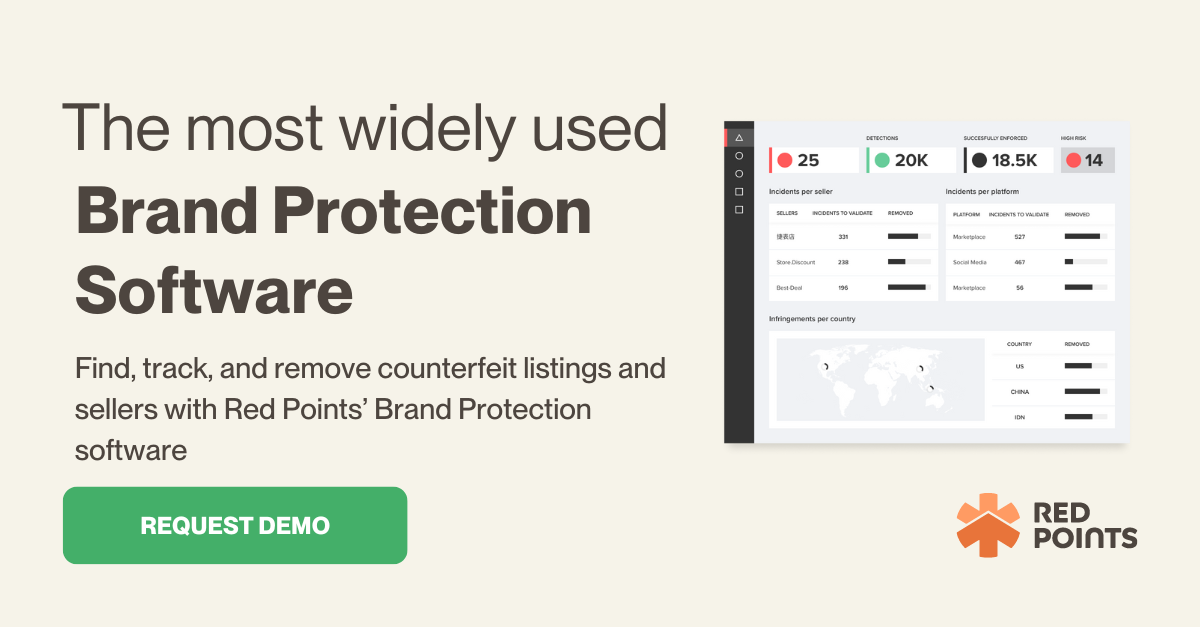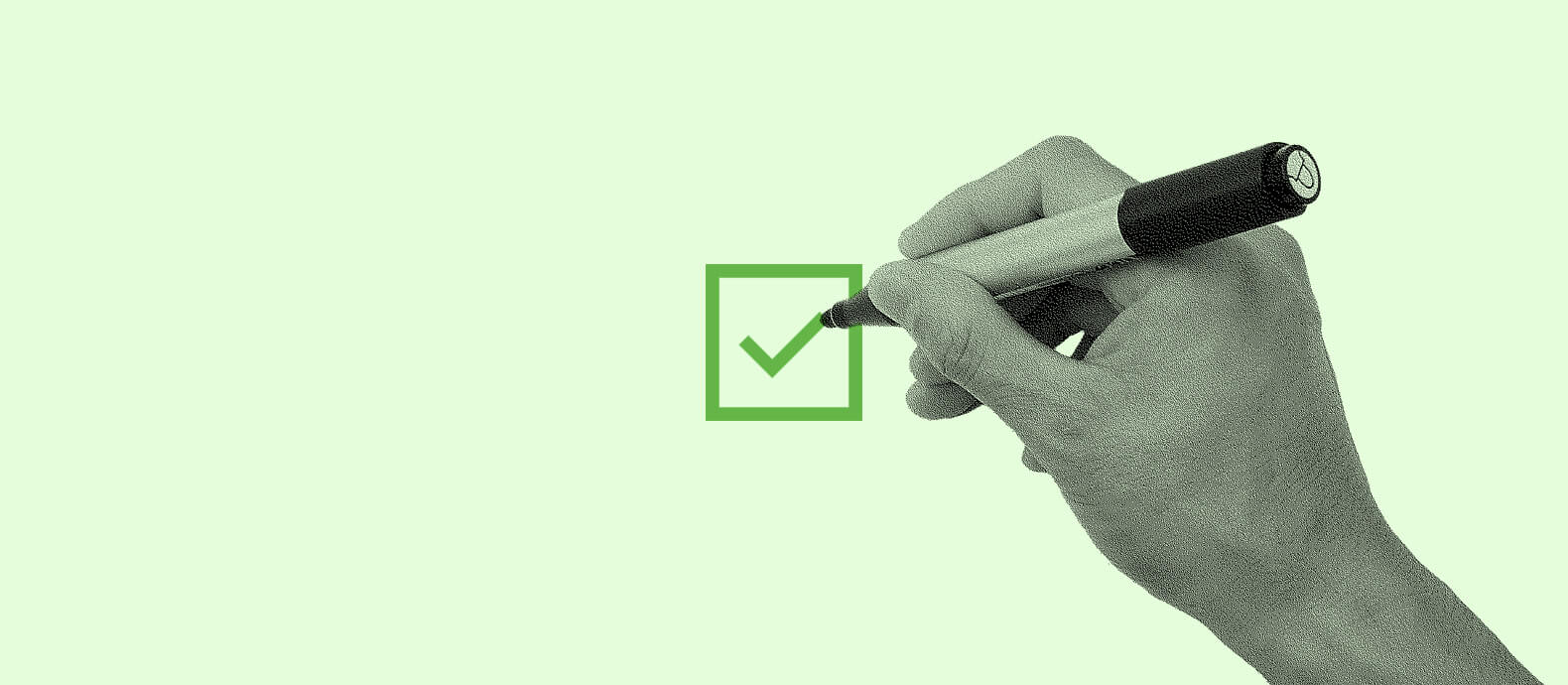Protecting your brand from counterfeits should be seen as a vital business task. The long-term impact of counterfeit on brands is massive. Loss of sales, reputation damages, loss of trust between business partners as well as resources taken up by fighting fakes are the major consequences for brands.
When counterfeit goods cross national borders, Custom and Border Control is a trusted resource to withdraw fake products from circulation. Things turn out differently when looking at the online space. Due to technological advances, cybercriminals are able to sell counterfeits online more easily. This means it gets even more complicated to protect companies online as infringers use innovative evasion techniques like geo-adaption to hide from detection.
In this article, we will review the key steps to protect your brand from counterfeits. We explain why it is important to register your brands’ intellectual property and show you the options to legally safeguard your brand online.
What is the first step you should take to prevent your brand from counterfeits?
Before going deeper into the actions to protect your brand, let’s first define what counterfeit is: counterfeits imitate genuine products of a brand by copying a products’ design and name without authorization from the intellectual property owner. By doing so, counterfeiters infringe copyrights, trademarks, or patents.
The most elementary step of protecting your brand from counterfeits is registering your intellectual property. Thereby you can prove and claim that you are the IP owner when detecting fake products. As a brand owner consider registering these intellectual properties:
Copyright
A copyright protects the original works of the creator. This can be literary work, music, art, software codes, architecture, and more. While copyright does not protect ideas, the owner of a copyright has the exclusive right to sell, publish and/or reproduce the protected work. Copyright protection doesn’t need formal registration as creators are automatically granted protection for their work. However, if you want to sell or start enforcing your copyright, registration is recommended.
Patent
A patent prevents an invention from being created, sold, or used by any third party without permission. The patent owner holds the right to commercialize his patent including selling or giving licenses to the invention to another party formed in a mutual agreement. You can distinguish between design patents that protect the ornamental appearance of an item and utility patents that cover the functional aspects of an item. Patents, as well as copyrights, expire after a certain period of time. In the EU, patents usually last 20 years.
Trademark
Trademarks are symbols, words, phrases, sounds, smells, or color schemes that allow consumers to identify and distinguish the source of goods and services of one company from another. The Nike symbol or Apple logo are examples of trademarks. While patents protect one single innovation, a trademark can cover a range of products or services.
Registering your intellectual property in your own country allows you to start protecting your brand internationally. IP usually needs to be registered in each country under national law as copyrights, patents and trademarks are not globally valid. Registration processes and fees can differ from country to country. If you want to learn more about building a robust IP portfolio, this Red Points Academy video gives insight into IP classifications and registration processes on a national and international level.
How to legally protect your brand from counterfeits
Now that you have built your IP portfolio, you can legally claim your rights and enforce illegitimate listings. Before choosing an enforcement strategy, it is important to be clear about the goals you want to achieve and then check what strategy suits you best.
Going through litigation
Filing a lawsuit to stop counterfeits should be considered thoroughly and only applied when the potential risks and rewards of litigation are gauged.
In court, you have to prove that fake listings have misled customers and that your brand has suffered as a result. Courts can grant an order to stop further infringements. Infringers are sometimes forced to compensate for monetary damages, give off their profits and pay for lawyer’s fees.
However, when your goal is to immediately remove illegitimate listings, protect your brand reputation, and prevent sales losses from fake products, filing a lawsuit is not the most effective strategy. Going through litigation is time-consuming, expensive and there is no guarantee that it will be successful.
Enforce the counterfeit listings
If you detect counterfeits of your product online, the first step is to take them down. The enforcement process depends on the platform where the infringement takes place.
Usually, e-commerce platforms and social media networks are aware of the problem and provide support for the enforcement process. However, knowing how to proceed on which platform helps you to act timely and efficiently. Red Points provides a continuously updated guide on how to take down counterfeits from top e-commerce platforms and walks you through the necessary steps to protect your brand from counterfeits in the future.
Scan the internet for potential infringements
Once you’ve taken down a counterfeit, it doesn’t mean that the problem is solved. Online brands often find themselves playing whack-a-mole with counterfeiters because infringers place fake listings on multiple marketplaces and across many countries. That’s when individual enforcements reach their limits and you should consider submitting takedown at scale with technology. Red Points’ anti-counterfeit solution can monitor and enforce your IP internationally and across marketplaces. These efficient technology solutions streamline the process of protecting your brand.
Next steps
The core of protecting your brand from counterfeits lies in building and maintaining a strong IP portfolio. When choosing an enforcement strategy, be clear about your goals and think beyond individual counterfeit cases that you witness. You can report fake products to the platforms where they are listed and defend your IP rights through litigation. However, these strategies are limited, either in the scope of the measures or in terms of time and money you have to invest.
Modern brand protection solutions overcome the shortfalls of single-case approaches by applying technology. Red Points brand protection service uses the most advanced tools to automatically detect IP infringements around the clock and across marketplaces. Cases are ranked by risk level to tackle the most harmful malefactors first. Get in touch to learn more about how Red Points can help.









